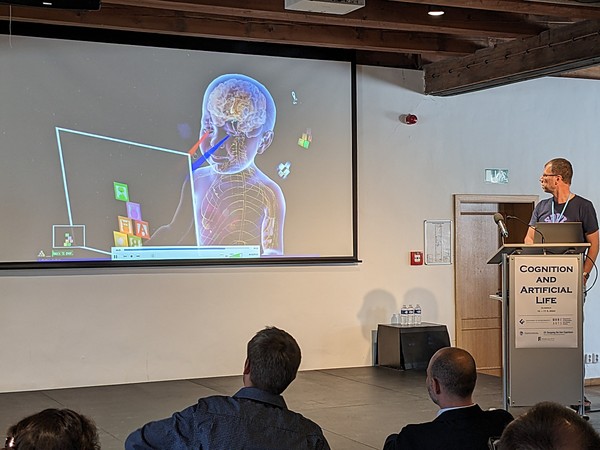The international conference Cognition and Artificial Life, organized by the Department of Geoinformatics of the UP Faculty of Science, together with the Department of Information and Library Studies of Masaryk University in Brno, focused on the advanced use of artificial intelligence (Al) in various areas of research and education. More than 50 experts from the Czech Republic, Slovakia, Poland and Germany attended the twenty-second year of the conference.
This year’s conference focused on the use of eye-tracking. “I have been involved in eye-tracking since 2011, using this method in map evaluation and optimization, which is why I was invited to organize this event,” said Stanislav Popelka from the Department of Geoinformatics.
The conference featured lectures on e.g. evaluating the attractiveness of Fort Science’s geographical exhibition using mobile eye-tracking glasses, cross-cultural research in cartography, the use of virtual reality in experimental psychology, and the democratization of eye-tracking data visualization using the GazePlotter tool. “That was one of the most interesting lectures. GazePlotter enables easy analysis and interpretation of data even for non-experts,” added the main organizer, Čeněk Šašinka from Masaryk University.
Markéta Košatková also participated in the international event with her paper “Navigating Classroom Challenges: How VR and AI Could Elevate Teaching Strategies”, which was awarded by the Minister of Education. “That was followed by presentations focused on various aspects of neural networks and cognitive robotics, including biologically motivated neural networks and addressee estimation in the context of AI, and a lecture by Jiří Čeňek on ‘Seeing beyond borders: Exploring the world’s diversity in visual perception’,” added Popelka.
The last day was focused on diagnosing dyslexia using AI and eye-tracking technologies. Jan Sedmidubský and Nicol Dostálová presented their work on new methods and projects in the field of dyslexia diagnosis and re-education. “During the conference, there were also interesting workshops focused on e.g. the development of hardware and software solutions in the field of eye-tracking and the implementation of eye-tracking in virtual reality, including practical demonstrations. Participants were also introduced to the concept of a project that uses virtual reality for theatrical performance,” said Šašinka.
The conference included an accompanying programme, during which there was a visit to the historical building of the Baroque gunpowder magazine (Prachárna) with an exhibition about the Olomouc Fortress, wine tasting, and beer tasting from the EUREKA Experimental Brewery. “The event was extremely successful, both in terms of the number of participants and the quality of the papers presented. Eye-tracking is proving to be a key tool for a deeper understanding of human perception and behaviour, as confirmed by the results of the studies presented here. It opens up new possibilities in many scientific and educational fields,” concluded Šašinka.
